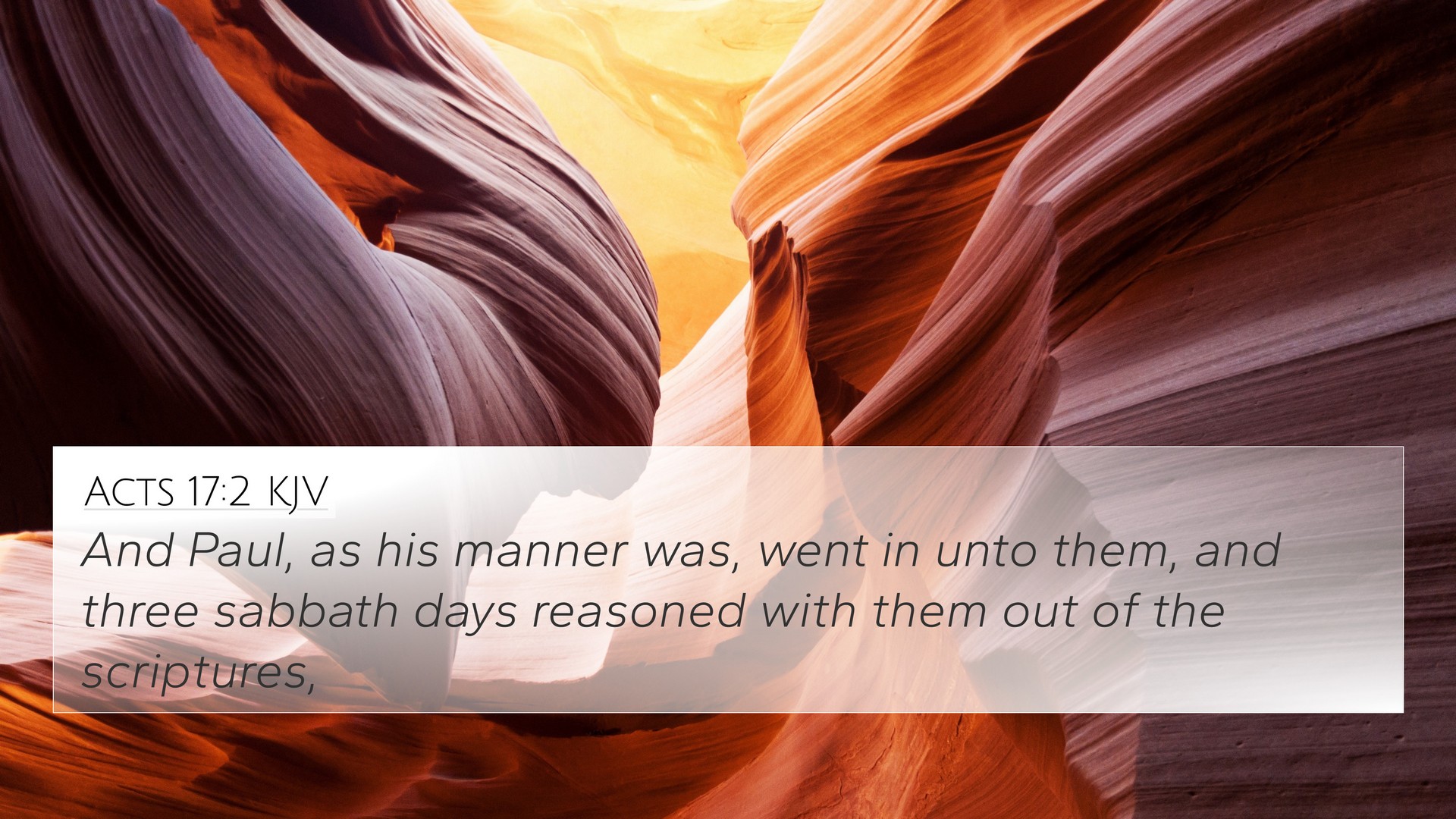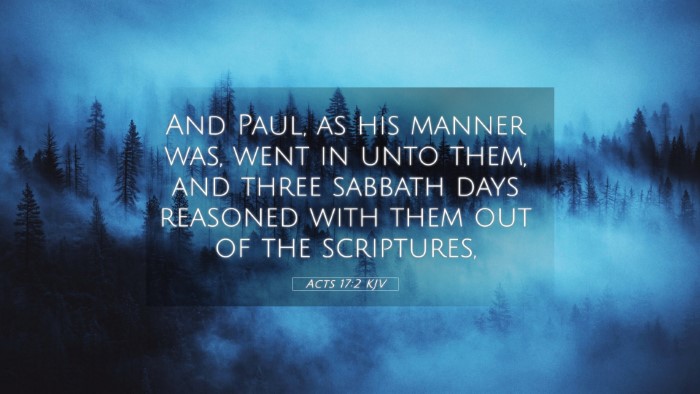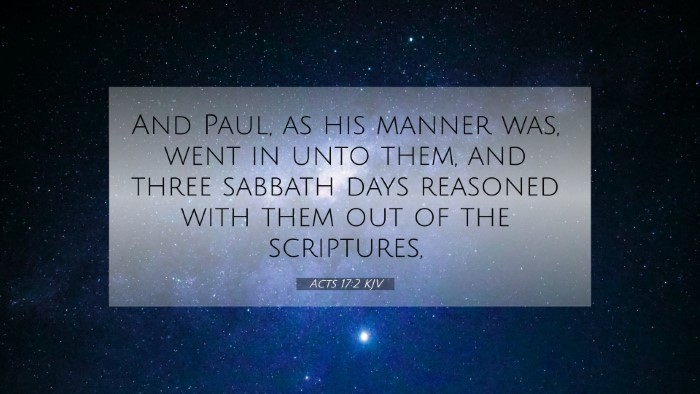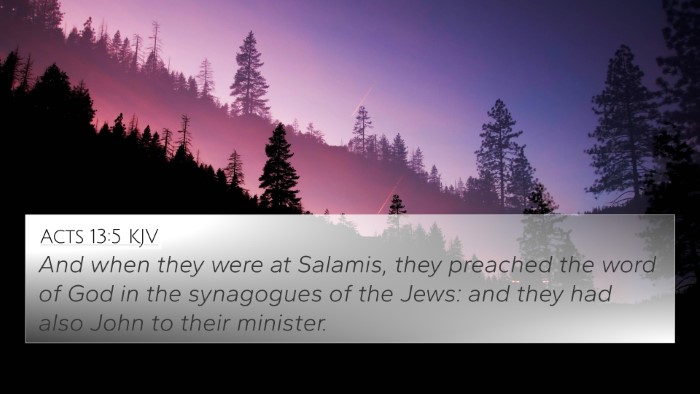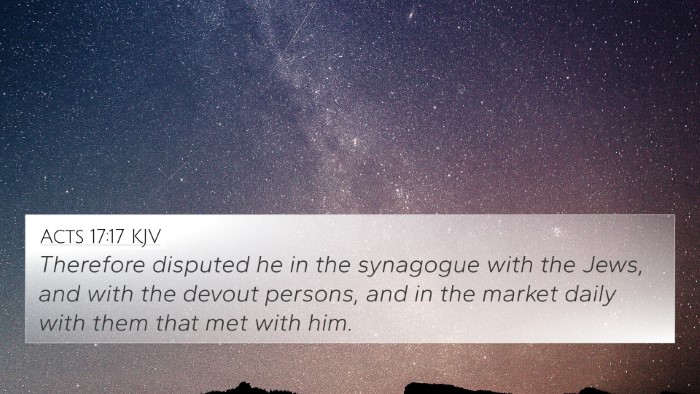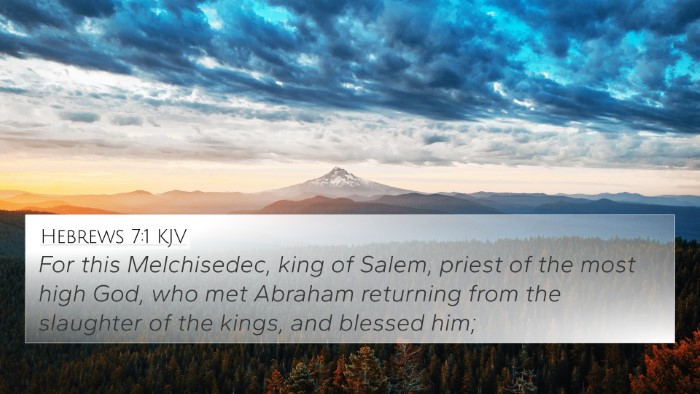Understanding Acts 17:2
Acts 17:2 states: "And Paul, as his manner was, went in unto them, and three sabbath days reasoned with them out of the scriptures."
Meaning and Context
This verse exemplifies the apostolic approach of Paul in evangelism. Paul visited Thessalonica, a key city in Macedonia, where he engaged with both Jews and Gentiles in the synagogue. His method was to reason with them "out of the scriptures," signifying his reliance on the Old Testament texts which were already authoritative to the Jewish audience.
Apostolic Methodology
Acts 17:2 reveals Paul's consistent methodology—using scripture as the foundation for his teaching. This reflects a broader strategy among apostles to connect New Testament truths to the Hebrew Scriptures.
Biblical Precedence
- Luke 24:27: Highlights how Jesus interpreted the scriptures concerning Himself, establishing a precedent for scriptural reasoning.
- Isaiah 1:18: Invites reasoning together, indicating that God welcomes dialogue based on His word.
- Romans 1:16: Paul’s confidence in the gospel as the power of God for salvation reinforces his scripture-centric evangelism.
Paul's Engagement with Scriptures
Paul’s three Sabbath days of reasoning indicates a dedicated approach, showing how crucial it was for him to explain and develop his arguments based on biblical texts. He aimed to show the fulfillment of scripture in Jesus Christ, linking the Old with the New Testament. This process reflects the essential practice of cross-referencing Biblical texts.
Lessons from Paul’s Example
- Importance of Preparation: Paul's time spent reasoning shows the necessity to be well-equipped with scripture for sharing the gospel.
- Utilization of Existing Knowledge: Engaging with those familiar with the scriptures enabled Paul to effectively relate to his audience.
- Scriptural Authority: By using scripture as his basis, Paul underscores the divine authority found in the scriptures.
Connections between Bible Verses
Acts 17:2 not only connects to other New Testament accounts where Paul reasons from scripture, but it also points back to the prophetic writings of the Old Testament. It serves as a bridge for understanding the coherence between various parts of scripture.
Related Bible Verses
- Acts 18:4: Paul’s continuous practice of reasoning in the synagogue underlines this method.
- John 5:39: Jesus encourages searching the scriptures, which affirms Paul's approach.
- 1 Peter 3:15: Calls believers to be prepared to give reasons for their hope, echoing the notion of reasoning about scriptures.
- 2 Timothy 2:15: Paul’s later instruction to Timothy emphasizes the importance of rightly dividing the word of truth.
Comparative Bible Verse Analysis
When engaging in a comparative analysis between various passages, one sees how Acts 17:2 aligns with a theme of scriptural engagement throughout the New Testament. Each reference enhances our understanding of how scripture guides the believer in their faith and reasoning. Below are additional verses that expand upon this theme:
- Matthew 22:29: Jesus highlights a lack of understanding of the scriptures and the power of God as a warning against presumption.
- 2 Corinthians 4:2: Paul emphasizes the importance of renouncing secret and shameful ways, aligning with wisdom found in the scriptures.
- Hebrews 4:12: The Word of God is living and active, emphasizing the transformative power of scripture in reasoning and faith.
Thematic Bible Verse Connections
By examining the thematic connections in Acts 17:2, we can understand broader biblical narratives about reasoning, faith, and the fulfillment of God's promise through scripture. This verse serves as an example of how the New Testament authors utilized Old Testament scriptures to validate their teachings.
Cross-Referencing Biblical Texts
In-depth studies of the scriptures reveal intricate weaving of themes across both Testaments. For instance:
- Luke 16:31: The importance of scripture in turning hearts to repentance aligns with Acts 17’s reasoning approach.
- Revelation 19:10: The testimony of Jesus is the spirit of prophecy, showing how the Gospel fulfills OT prophecies.
Scriptural Cross-Referencing
The practice of linking Bible scriptures is vital for enriching our understanding of faith. Tools for cross-referencing can be essential in identifying connections and drawing parallels between passages. A systematic approach helps scholars and laypersons alike to uncover the deep inter-Biblical dialogue.
Resources for Effective Study
Utilizing a Bible concordance or a Bible cross-reference guide can greatly enhance one's ability to conduct thorough studies. Here are some resources that can aid in cross-referencing:
- Bible Chain References: These tools can streamline the discovery of thematic references through different scriptures.
- Comprehensive Bible Cross-Reference Materials: Using these expansive resources fosters a deeper understanding of scripture.
- How to Use Bible Cross-References: Understanding the system of cross-referencing is vital for insightful Bible study.
Conclusion
Acts 17:2 serves as an exemplary model of apostolic teaching, illustrating the importance of engaging with scripture in one's faith journey. The relational dynamics between Old and New Testament writings reveal a coherent narrative and divine plan that culminates in Jesus Christ. By exploring this verse and its connections, believers can deepen their understanding of the Bible and reinforce their faith through the cross-referencing of scripture.
This holistic approach to scripture encourages a life of learning, reasoning, and fervent study, as encouraged and exemplified by the apostle Paul.
